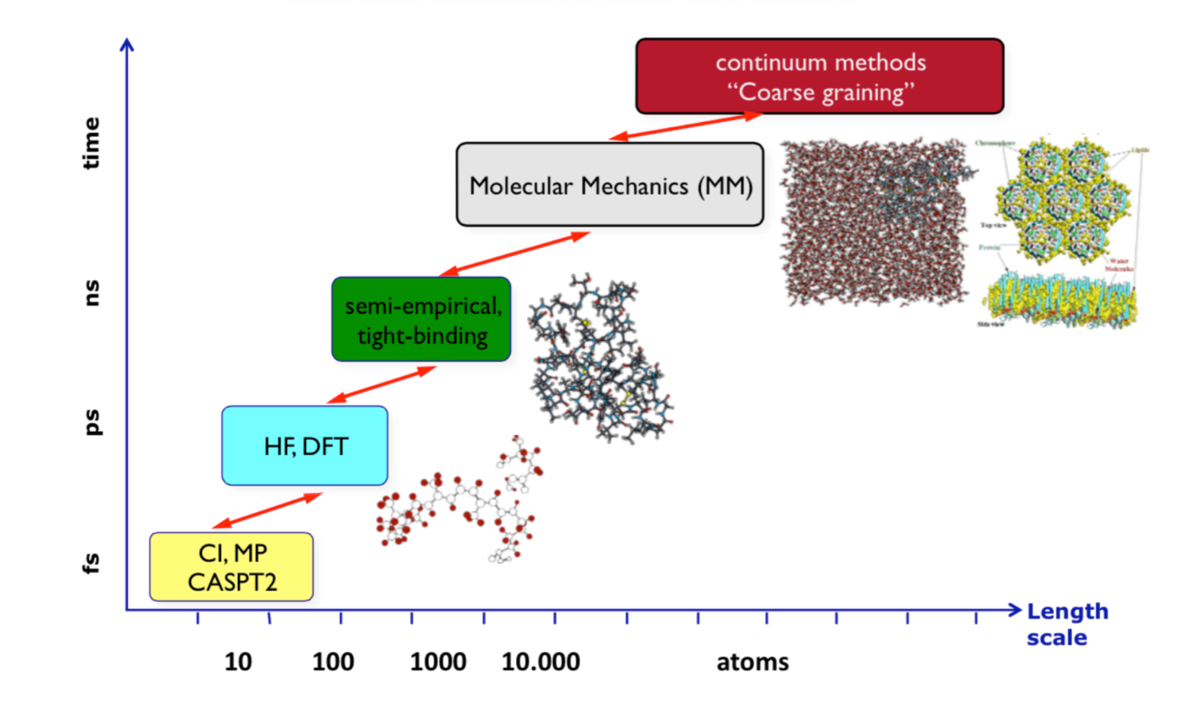Molecular Modelling
Molecular Modelling is concerned with the description of structure, dynamics and energetics of physical and chemical processes in complex molecular environments. Problems from engineering and physics, like solids, surfaces and solid/liquid or solid/gas interfaces are treated as well as problems from Chemistry and Biology, like small molecule reactivity in solution or in (bio-) catalytic processes, ion- and electron-transport or photo-initiated processes etc... The common ground of all these processes is that the atomistic or molecular detail turns out to be important for the understanding of the materials properties. Therefore, simulation techniques have their basis in an atomistic description, which can be augmented in special circumstances by a continuum description using so-called multi-scale methods. As a main tool, empirical force field methods are applied, which can nowadays be routinely applied to treat systems with several hundreds of thousands atoms, following their dynamics into the micro-second regime. If chemical processes are or relevance, so called quantum mechanical/molecular mechanical (QM/MM) methods allow to couple the empirical force field description to a quantum mechanical description of a subsystem. These methods can be applied to follow the systems finite temperature dynamics, and to compute free energy changes along relevant physico-chemical reaction coordinates, which enable a thorough understanding of these microscopic events. The CTMN cluster assembles the expertise of several groups working in a broad range of application areas, from solids to biochemical problems, applying a variety of different simulation techniques.
| Name | Institute |
|---|---|
| Elstner, Marcus | Institute of Physical Chemistry (IPC) |
| Hochbruck, Marlies | Department of Mathematics |
| Schug, Alexander | Steinbuch Centre for Computing (SCC) |
| Wenzel, Wolfgang | Institute of Nanotechnology (INT) |


